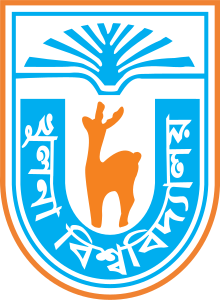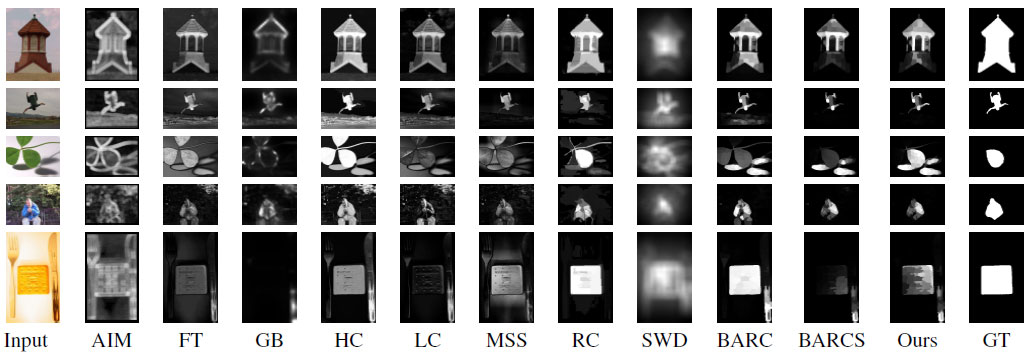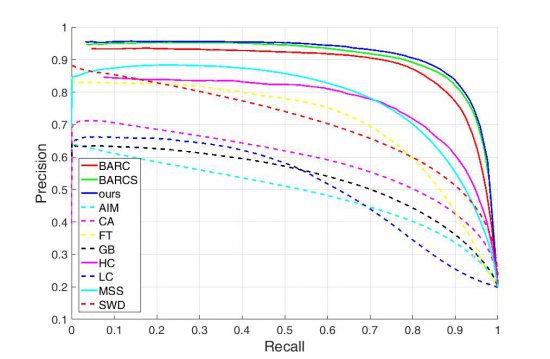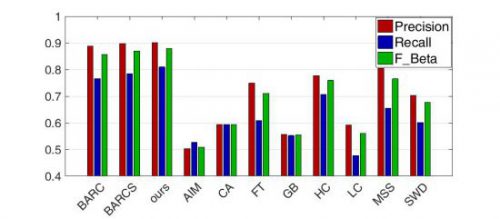| 1. | Ayasha Hossain Jui; Samia Sharnami; Aminul Islam A CNN Based Approach to Classify Skin Cancers using Transfer Learning Conference 25th International Conference on Computer and Information Technology (ICCIT), 25th International Conference on Computer and Information Technology (ICCIT), 2022, ISBN: 979-8-3503-4602-2. Abstract | Links | BibTeX @conference{Islam2022-2,
title = {A CNN Based Approach to Classify Skin Cancers using Transfer Learning},
author = {Ayasha Hossain Jui; Samia Sharnami; Aminul Islam},
url = {https://ieeexplore.ieee.org/document/10055838},
doi = {doi.org/10.1109/ICCIT57492.2022},
isbn = {979-8-3503-4602-2},
year = {2022},
date = {2022-12-17},
booktitle = {25th International Conference on Computer and Information Technology (ICCIT)},
publisher = {25th International Conference on Computer and Information Technology (ICCIT)},
abstract = {Skin cancer is one of the most frequent types of cancer in the world. Malignant skin cancers can become life-threatening if not treated in an early stage. Some skin cancers like Squamous Cell Carcinoma (SCC), Melanoma (MEL), and Basal Cell Carcinoma (BCC) are always malignant and can cause fatal damage to the skin. Therefore, early identification is essential for minimizing the harm. This study uses transfer learning and explores the famous pre-trained model, Xception, with necessary fine tuning to classify eight types of skin cancers. During the training of the proposed model, data augmentation techniques are used to introduce diversity in the training phase. The proposed method is tested on the International Skin Imaging Collaboration (ISIC) 2019 dataset. It exhibits better results than similar studies which can help early detection of malignant skin cancers.},
keywords = {},
pubstate = {published},
tppubtype = {conference}
}
Skin cancer is one of the most frequent types of cancer in the world. Malignant skin cancers can become life-threatening if not treated in an early stage. Some skin cancers like Squamous Cell Carcinoma (SCC), Melanoma (MEL), and Basal Cell Carcinoma (BCC) are always malignant and can cause fatal damage to the skin. Therefore, early identification is essential for minimizing the harm. This study uses transfer learning and explores the famous pre-trained model, Xception, with necessary fine tuning to classify eight types of skin cancers. During the training of the proposed model, data augmentation techniques are used to introduce diversity in the training phase. The proposed method is tested on the International Skin Imaging Collaboration (ISIC) 2019 dataset. It exhibits better results than similar studies which can help early detection of malignant skin cancers. |
| 2. | Mahmudul Hasan Abid; Aminul Islam; Atish Dipankar Biswas; Iffat Ara Talin IoT-BASED VEHICLE TRACKING SYSTEM FOR KHULNA UNIVERSITY Journal Article In: Khulna University Studies, 2022, ISSN: 1563-0897. Abstract | Links | BibTeX @article{Islam2022-1,
title = {IoT-BASED VEHICLE TRACKING SYSTEM FOR KHULNA UNIVERSITY},
author = {Mahmudul Hasan Abid; Aminul Islam; Atish Dipankar Biswas; Iffat Ara Talin},
url = {https://ku.ac.bd/journal/kustudies/article/view/916},
doi = {10.53808/KUS.2022.ICSTEM4IR.0234-se},
issn = {1563-0897},
year = {2022},
date = {2022-07-01},
journal = {Khulna University Studies},
abstract = {Right now, there is no perceptible vehicle management framework for Khulna university that provides a vehicle monitoring system, real-time fuel consumption data analysis, vehicle route optimization by calculating passenger traffic, and so on. Albeit creating that framework is the holistic objective of the total project, the significant objective of this paper is to propose a cost-effective, reliable IoT-based vehicle monitoring system for Khulna University based on the developed prototype device. The open-source controller and GPS-GPRS-based module determine the real-time position of the vehicle, and the location of the test vehicle can be communicated via GPRS, which is provided by the GSM network. This real-time location data is stored in a web-based IoT platform. Authorized users of the system can access this information via the internet. The proposed solution will facilitate all stakeholders, including teachers, students, and other Khulna University staffs, to use this information to make smarter travel selections. This will also pave the way for future research like intelligent vehicle route optimization by storing real data from different vehicles of Khulna University on the online database.},
keywords = {},
pubstate = {published},
tppubtype = {article}
}
Right now, there is no perceptible vehicle management framework for Khulna university that provides a vehicle monitoring system, real-time fuel consumption data analysis, vehicle route optimization by calculating passenger traffic, and so on. Albeit creating that framework is the holistic objective of the total project, the significant objective of this paper is to propose a cost-effective, reliable IoT-based vehicle monitoring system for Khulna University based on the developed prototype device. The open-source controller and GPS-GPRS-based module determine the real-time position of the vehicle, and the location of the test vehicle can be communicated via GPRS, which is provided by the GSM network. This real-time location data is stored in a web-based IoT platform. Authorized users of the system can access this information via the internet. The proposed solution will facilitate all stakeholders, including teachers, students, and other Khulna University staffs, to use this information to make smarter travel selections. This will also pave the way for future research like intelligent vehicle route optimization by storing real data from different vehicles of Khulna University on the online database. |
| 3. | Sk Md Masudul Ahsan; Aminul Islam Visual Saliency Detection using Seam and Color Cues Journal Article In: Advances in Science, Technology and Engineering Systems Journal, 6 (2), pp. 139-153, 2021, ISSN: 2415-6698. Abstract | Links | BibTeX @article{Aminul2021,
title = {Visual Saliency Detection using Seam and Color Cues},
author = {Sk Md Masudul Ahsan and Aminul Islam},
editor = {Prof. Passerini Kazmerski},
url = {https://astesj.com/?smd_process_download=1&download_id=26458},
doi = {10.25046/aj060217},
issn = {2415-6698},
year = {2021},
date = {2021-03-10},
journal = {Advances in Science, Technology and Engineering Systems Journal},
volume = {6},
number = {2},
pages = {139-153},
abstract = {Human have the god gifted ability to focus on the essential part of a visual scenery irrespective of its background. This important area is called the salient region of an image. Computationally achieving this natural human quality is an attractive goal of today’s scientific world. Saliency detection is the technique of finding the salient region of a digital image. The color contrast between the foreground and background present in an image is usually used to extract this region. Seam Map is computed from the cumulative sum of energy values of an image. The proposed method uses seam importance map along with the weighted average of various color channels of Lab color space namely boundary aware color map to extract the saliency map. These two maps are combined and further optimized to get the final saliency output using the optimization technique proposed in a previous study. Some intermediate combinations which are closer to the proposed optimized version but differ in the optimization technique are also presented in this paper. Several standard benchmark datasets including the famous MSRA 10k dataset are used to evaluate performance of the suggested procedure. Precision-recall curve and F-beta values found from the experiments on those datasets and comparison with other state of the art techniques prove the superiority of the proposed method.},
keywords = {},
pubstate = {published},
tppubtype = {article}
}
Human have the god gifted ability to focus on the essential part of a visual scenery irrespective of its background. This important area is called the salient region of an image. Computationally achieving this natural human quality is an attractive goal of today’s scientific world. Saliency detection is the technique of finding the salient region of a digital image. The color contrast between the foreground and background present in an image is usually used to extract this region. Seam Map is computed from the cumulative sum of energy values of an image. The proposed method uses seam importance map along with the weighted average of various color channels of Lab color space namely boundary aware color map to extract the saliency map. These two maps are combined and further optimized to get the final saliency output using the optimization technique proposed in a previous study. Some intermediate combinations which are closer to the proposed optimized version but differ in the optimization technique are also presented in this paper. Several standard benchmark datasets including the famous MSRA 10k dataset are used to evaluate performance of the suggested procedure. Precision-recall curve and F-beta values found from the experiments on those datasets and comparison with other state of the art techniques prove the superiority of the proposed method. |
| 4. | Aminul Islam; Sk Md Masudul Ahsan; Joo Kooi Tan Saliency detection using the combination of boundary aware color-map and seam-map Conference 5th IEEE Intl. Conf. on Computer, Communication, Chemical, Material and Electronic Engineering (IC4ME2), Bangladesh, 2019, ISBN: 978-1-7281-3060-6. Abstract | Links | BibTeX @conference{Islam2019,
title = {Saliency detection using the combination of boundary aware color-map and seam-map},
author = {Aminul Islam and Sk Md Masudul Ahsan and Joo Kooi Tan},
url = {https://ieeexplore.ieee.org/abstract/document/9036637},
doi = {10.1109/IC4ME247184.2019.9036637},
isbn = {978-1-7281-3060-6},
year = {2019},
date = {2019-07-15},
booktitle = {5th IEEE Intl. Conf. on Computer, Communication, Chemical, Material and Electronic Engineering (IC4ME2), Bangladesh},
abstract = {Salient region of an image is usually detected by using contrast and boundary priors. Along with those cues the use of seam importance map has shown promising output previously. In this study, better result is found by further exploiting the seam-map using spatial distance and color information in combination with boundary prior. Color and seam maps are also down-weighted using average spatial distance to other regions. Moreover, passing the superpixelized version of the input image into seam and color map generation procedure has improved the output. Experimental results based on MSRA 1k dataset are presented with ten state of the art methods. F-beta measures are presented along with precision recall curves to better understand the outcome. The performance comparison with compared researches proofs superiority of the proposed method.},
keywords = {},
pubstate = {published},
tppubtype = {conference}
}
Salient region of an image is usually detected by using contrast and boundary priors. Along with those cues the use of seam importance map has shown promising output previously. In this study, better result is found by further exploiting the seam-map using spatial distance and color information in combination with boundary prior. Color and seam maps are also down-weighted using average spatial distance to other regions. Moreover, passing the superpixelized version of the input image into seam and color map generation procedure has improved the output. Experimental results based on MSRA 1k dataset are presented with ten state of the art methods. F-beta measures are presented along with precision recall curves to better understand the outcome. The performance comparison with compared researches proofs superiority of the proposed method. |
| 5. | Aminul Islam; Sk Md Masudul Ahsan; Joo Kooi Tan Saliency detection using boundary aware regional contrast based seam-map Conference IEEE International Conference on Innovation in Engineering and Technology (ICIET), Bangladesh, 2018, ISBN: 978-1-5386-5229-9. Abstract | Links | BibTeX @conference{Islam2018,
title = {Saliency detection using boundary aware regional contrast based seam-map},
author = {Aminul Islam and Sk Md Masudul Ahsan and Joo Kooi Tan},
url = {https://ieeexplore.ieee.org/document/8660825},
doi = {10.1109/CIET.2018.8660825},
isbn = {978-1-5386-5229-9},
year = {2018},
date = {2018-12-28},
booktitle = {IEEE International Conference on Innovation in Engineering and Technology (ICIET), Bangladesh},
abstract = {Most of the saliency detection methods use the contrast and boundary priors to extract the salient region of an input image. These two approaches are followed in Boundary Aware Regional Contrast Based Visual Saliency Detection (BARC) along with spatial distance information to achieve state of the art result. In this research, a more interesting cue is introduced to extract the salient region from an input image. Here, a combination of seam map and BARC is presented to produce the saliency output. Seam importance map with boundary prior is also presented to measure the performance of this combination. Experiments with ten state of the art methods reveal that we get better saliency output by combining seam information of an input image with BARC.},
keywords = {},
pubstate = {published},
tppubtype = {conference}
}
Most of the saliency detection methods use the contrast and boundary priors to extract the salient region of an input image. These two approaches are followed in Boundary Aware Regional Contrast Based Visual Saliency Detection (BARC) along with spatial distance information to achieve state of the art result. In this research, a more interesting cue is introduced to extract the salient region from an input image. Here, a combination of seam map and BARC is presented to produce the saliency output. Seam importance map with boundary prior is also presented to measure the performance of this combination. Experiments with ten state of the art methods reveal that we get better saliency output by combining seam information of an input image with BARC. |
| 6. | Sk Md Masudul Ahsan; Joo Kooi Tan; Hyoungseop Kim; Seiji Ishikawa Boundary aware regional contrast based visual saliency detection (BARC) Conference 21st Intl. Symposium on Artificial Life and Robotics (ISAROB '16), Japan, 2016. BibTeX @conference{ahsan2016,
title = {Boundary aware regional contrast based visual saliency detection (BARC)},
author = {Sk Md Masudul Ahsan and Joo Kooi Tan and Hyoungseop Kim and Seiji Ishikawa},
year = {2016},
date = {2016-07-01},
booktitle = {21st Intl. Symposium on Artificial Life and Robotics (ISAROB '16)},
address = {Japan},
keywords = {},
pubstate = {published},
tppubtype = {conference}
}
|
| 7. | S. Goferman; L. Zelnik-Manor; A. Tal Context-Aware Saliency Detection Conference IEEE Transactions on Pattern Analysis and Machine Intelligence, 2012. BibTeX @conference{Goferman:2012,
title = {Context-Aware Saliency Detection},
author = {S. Goferman and L. Zelnik-Manor and A. Tal},
year = {2012},
date = {2012-07-05},
booktitle = {IEEE Transactions on Pattern Analysis and Machine Intelligence},
keywords = {},
pubstate = {published},
tppubtype = {conference}
}
|
| 8. | M. Cheng; G. Zhang; N. J. Mitra; X. Huang; S. Hu Global contrast based salient region detection Conference Proc. CVPR, 2011. BibTeX @conference{Cheng:2011,
title = {Global contrast based salient region detection},
author = {M. Cheng and G. Zhang and N. J. Mitra and X. Huang and S. Hu},
year = {2011},
date = {2011-07-01},
booktitle = {Proc. CVPR},
keywords = {},
pubstate = {published},
tppubtype = {conference}
}
|
| 9. | L. Duan; C. Wu; J. Miao; L. Qing; Y. Fu Visual saliency detection by spatially weighted dissimilarity Conference Proc. CVPR, 2011. BibTeX @conference{Duan2011,
title = {Visual saliency detection by spatially weighted dissimilarity},
author = {L. Duan and C. Wu and J. Miao and L. Qing and Y. Fu},
year = {2011},
date = {2011-07-01},
booktitle = {Proc. CVPR},
keywords = {},
pubstate = {published},
tppubtype = {conference}
}
|
| 10. | R. Achanta; S. Süsstrunk Saliency detection using maximum symmetric surround Conference Proc. IEEE Int. Conf. Image Processing, 2010. BibTeX @conference{Achanta2010,
title = {Saliency detection using maximum symmetric surround},
author = {R. Achanta and S. Süsstrunk},
year = {2010},
date = {2010-07-01},
booktitle = {Proc. IEEE Int. Conf. Image Processing},
keywords = {},
pubstate = {published},
tppubtype = {conference}
}
|
| 11. | R. Achanta; S. Hemami; F. Estrada; S. Susstrunk Frequency-tuned salient region detection Conference Proc. IEEE Conf. Computer Vision and Pattern Recognition, 2009. BibTeX @conference{Achanta:2009,
title = {Frequency-tuned salient region detection},
author = {R. Achanta and S. Hemami and F. Estrada and S. Susstrunk},
year = {2009},
date = {2009-08-01},
booktitle = {Proc. IEEE Conf. Computer Vision and Pattern Recognition},
keywords = {},
pubstate = {published},
tppubtype = {conference}
}
|
| 12. | N. D. B. Bruce; J. K. Tsotsos Saliency, attention, and visual search: An information theoretic approach Journal Article In: Journal of Vision, 2009. BibTeX @article{Bruce2009,
title = {Saliency, attention, and visual search: An information theoretic approach},
author = {N. D. B. Bruce and J. K. Tsotsos},
year = {2009},
date = {2009-07-09},
journal = {Journal of Vision},
keywords = {},
pubstate = {published},
tppubtype = {article}
}
|
| 13. | Bernhard Schölkopf; John Platt; Thomas Hofmann Graph-Based Visual Saliency Conference 2007. BibTeX @conference{Schoelkopf2007,
title = {Graph-Based Visual Saliency},
author = {Bernhard Schölkopf and John Platt and Thomas Hofmann},
year = {2007},
date = {2007-08-02},
keywords = {},
pubstate = {published},
tppubtype = {conference}
}
|
| 14. | Zhai, Yun; Shah, Mubarak Visual Attention Detection in Video Sequences Using Spatiotemporal Cues Conference Proc. of the 14th ACM Int. Conf. on Multimedia, 2006. BibTeX @conference{Zhai2006,
title = {Visual Attention Detection in Video Sequences Using Spatiotemporal Cues},
author = {Zhai, Yun and Shah, Mubarak},
year = {2006},
date = {2006-07-01},
booktitle = {Proc. of the 14th ACM Int. Conf. on Multimedia},
keywords = {},
pubstate = {published},
tppubtype = {conference}
}
|







